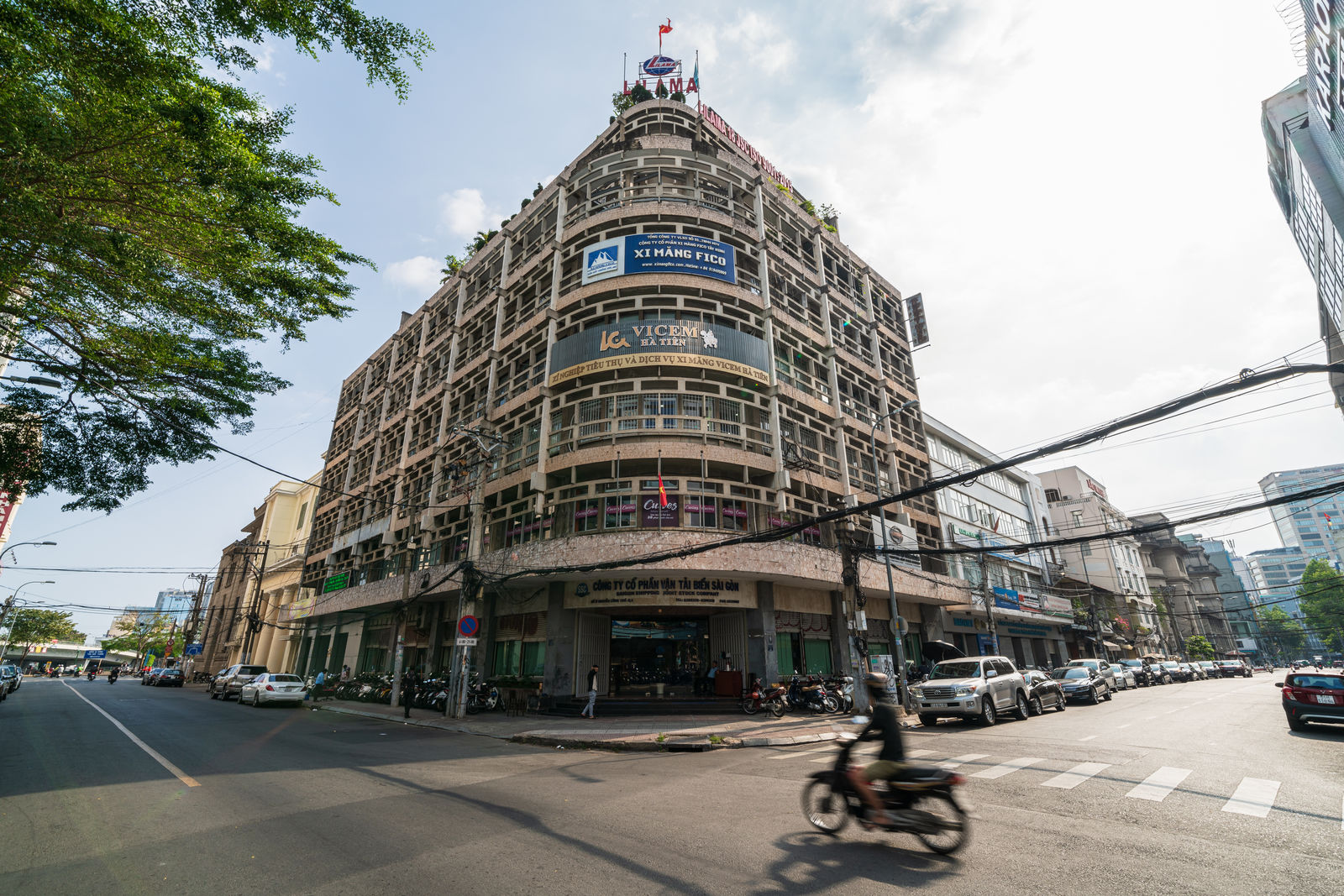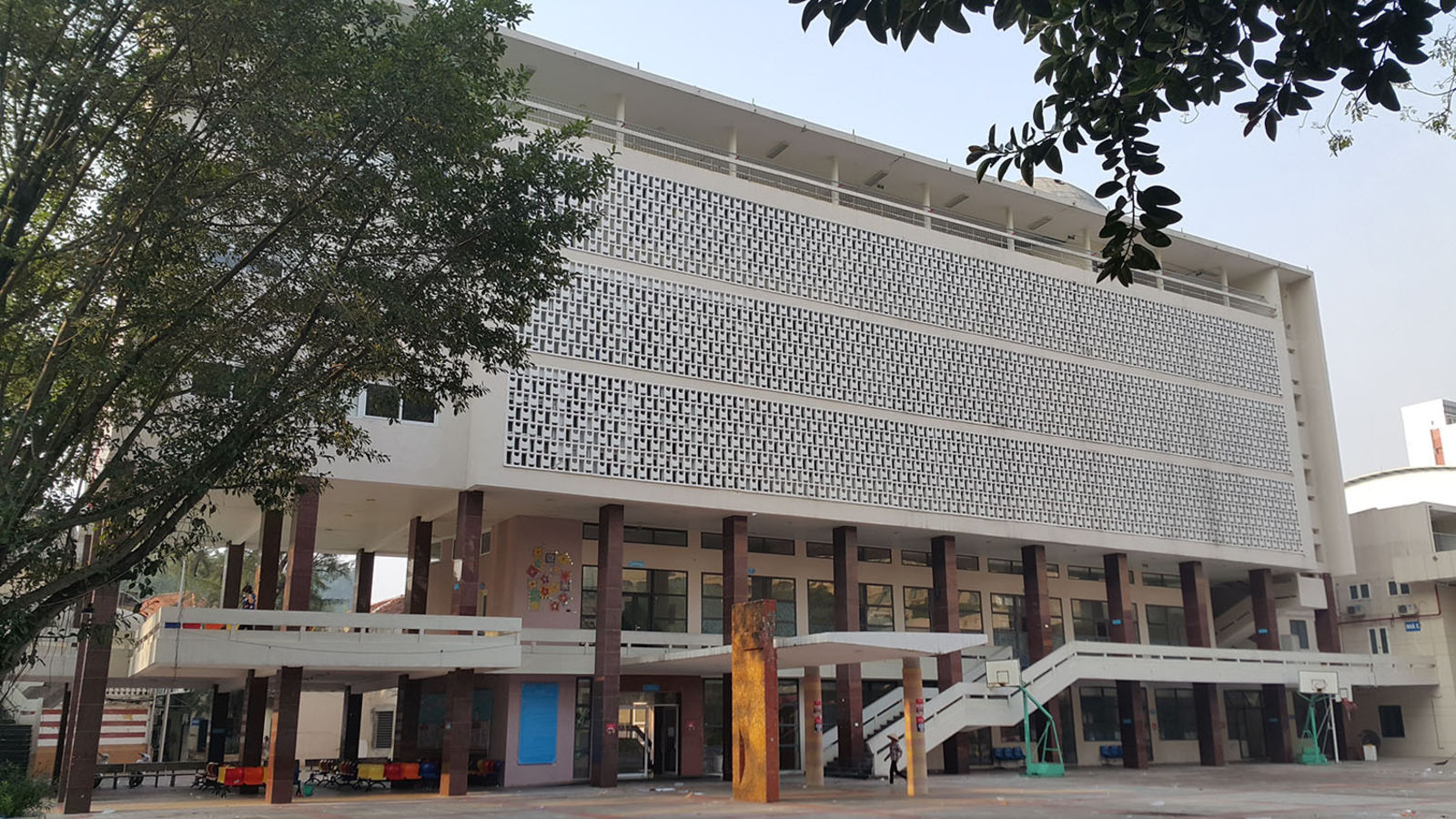Ask a person on the street what Vietnam’s distinctive style of architecture is, and the answer you get might be traditional architecture, like the historic curves of northern Vietnam’s village temples or the ornate regality of Nguyễn-Dynasty palaces. This time-honored style is widely accepted as the hallmark of Vietnam’s cultural wealth. What’s more fascinating but lesser-known is how this cultural vestige — which distinguished our architecture from that of China and Japan — has also managed to evolve in the new age, finding ways to exist right in the middle of our modern lifetime.
From the 1950s to the 1970s, Vietnam’s distinctive architecture has fashioned for itself a new life in the modern era, not just setting itself apart from that of our Asian contemporaries but also from the world.
Traditional Vietnamese homes through colonial periods

The most characteristically Vietnamese style of traditional homes. Photo via Dân Việt.
From after the periods under Chinese rule until now, some could divide the two main categories of Vietnamese indigenous architecture: ancient architecture and modernist architecture. In between these lies the colonial eras. While Vietnamese culture underwent a constant process of fine-tuning and re-imagining through each historical era, from the Đinh to the Nguyễn dynasties, architecture — as part of culture — has also similarly transformed to take on a distinctive identity and taste that can express the Vietnamese quality.
That identity is evident in the grace and modesty of Vietnamese homesteads, surrounded by vast gardens and natural landscapes. The living quarters have always retreated deep beneath a network of shelter protecting the veranda. Wrapping around the interior is a collection of wooden doors and windows that can be closed, opened, folded in, or detached so the homeowner can freely modify their living space to fit the desired levels of openness. This is a clever system that anchors the house right into its native climate. The interior, in actuality, is usually also the exterior. It is this identity that gives Vietnamese architecture its own sensibilities. Thanks to the wide eaves and veranda that shelter the living space deep inside, from afar, it can look as if the roof is hovering above layers of shadows.
The Vietnamese people have fostered a specific sensibility when it comes to playing with shadows — a highly intuitive connection with shadow as a housing “material.” From macro to micro levels, from columns and rafters to wooden reliefs, the traditional Vietnamese home is often a living landscape where the light and the dark, the visible and the invisible, the functional and the ornamental intermingle. It is a delicate balance that has been building over centuries.
The advent of modernism

The V.A.R Building in Hồ Chí Minh City, designed by architect Lê Văn Lắm in 1973. Photo by Phạm Vinh.
This millennium-long process is truncated by almost a century of French colonialism. Right after Vietnam regained its independence from the French, it stepped right into the midst of the modern era. Locals started living in brick homes, wearing pressed shirts and jeans, riding bikes, and working in bureaus instead of in fields. The advent of modernism came rather suddenly.
Yet, it was right within this sudden change that the Vietnamese taste had an opportunity to flourish with aplomb. Using the languages of modernism, Vietnam’s own architectural identity could present itself as a form of indigenous architecture with refreshing expressions. Coming out of French colonization, both northern and southern Vietnam could benefit from the industrial infrastructure left over by the colonial administration. This was the initial factor making modernist architecture possible in Vietnam during this time.

A modernist apartment on Hải Thượng Lãn Ông Street, District 5. Photo by Phạm Vinh.
Moreover, the modernist movement was supported by the local government, especially in the south, seeking to give the urban landscape a new face in the new era, but still rooted in traditional values. A plethora of large-scale public projects in the modernist style were commissioned, such as the Reunification Palace, the HCMC Library of General Sciences, Turtle Lake, etc. These constructions were all designed by Vietnamese architects who were professionally trained at the École des Beaux-Arts de l’Indochine or the Paris-based École nationale supérieure des Beaux-Arts in the 1930s and 1940s. Each building has its own distinctive charm that distinguishes it from modernist projects elsewhere in the world.
It must be noted that Vietnam’s modernist buildings were part of the modernist movement that started in the early 20th century by thought leaders like German architect Walter Gropius, who founded the Bauhaus school; and Swiss-French architect Le Corbusier, who pioneered the idea that architecture should be logical, functional, and purposeful. Under modernist influences, architects turned away from expensive, ornate embellishments and headed towards a new vision of design that was cost-effective, comfortable, and no-nonsense — an architectural style born of technological advancements with cement, steel, and glass. Still, it didn’t mean that they rejected aesthetic elements. Honesty and rationality themselves became the aesthetic. Modernist architecture is the architecture of reason.



14A Cao Thắng, Ward 2, District 3, HCMC.
The crop of modernist architects in Vietnam back then — like Trần Văn Tải, Lê Văn Lắm, Nguyễn Văn Hoa, Phạm Văn Thâng, Nguyễn Quang Nhạc, and Ngô Viết Thụ — were actively experimenting with modernism in southern Vietnam. What came out of it also stayed close to the principle of practicality. Modernist buildings were designed to be as efficient as possible, employing cement, concrete, steel, and glass to create micro-climates. Specific features were incorporated in order to allay the harshness of the tropical sun and the ferocious attacks of monsoon rainstorms, such as a system of sun shelters and natural ventilation. The modernist structures that materialized during this time, both from the public and private sectors, were the very first steps towards establishing Vietnamese modernism as an independent architectural movement, with lessons taken from traditional architecture.




2 Tống Văn Trân, District 11, HCMC.
Modernist language in daily civil projects
Somewhere in this timeline, something unexpected happened. From the architectural vocabulary created by pioneers, in addition to a strong sense of personal aesthetic, common Vietnamese people started practicing modernist architecture on their own, bringing about a new realm of architecture with nearly no involvement of professional architects and bending the ideals of modernism to fuse with the architectural sensibilities of Vietnamese. Outside of infrastructure and public administrative projects, countless private residences in modernist style sprouted in Saigon from the mid-1950s to the 1970s. These houses could be classified as modernist due to their use of industrial materials, but often don’t exhibit the core principles of modernism, such as rationality. Instead, they came to be, at times, based on purely intuitive choices. Such contrast revealed the crucial way Vietnamese culture surfaced right in the heart of architecture.




57 Đề Thám, Cô Giang Ward, District 1, HCMC.
Across the myriads of urban houses constructed this way, we can detect an aesthetic intuition that’s intense and dense, but also quite graceful. Based on the utilitarian frame of a tube house, the owners carved out their own expressions of taste on the limited space of the house facade.
Walking past a block filled with 20th-century modernist tube houses, spectators would probably feel like they’re attending a sculpture exhibition. Planters, louvers, brise-soleils, iron frames, and pergolas were all created and added liberally and then polished, installed, and decorated to geometric satisfaction.
Not to mention the materials: house projects gave in to the allure of washed rocks and mosaics, and played with shadow, a strange element in itself, invisible but quite affecting. Just by molding shadows, they created elements that seemingly float in mid-air. Every experiment was encapsulated in the people’s creative consciousness.



227 Trần Bình Trọng, Ward 3, District 5, HCMC.
The spectacular palate of Vietnamese modernist architecture, particularly as expressed in urban houses, is not just a worthy subject to be studied, but also the trace of a cultural pulse that has beaten across the timeline of Vietnam’s history. It’s the physical manifestation of the people’s spiritual life, where their sense of aesthetics can reflect their national identity. The elegance of shadows and their ratio, depths, and intensity; the density of layers upon layers of ornamental elements; and the sharpness of the composition — all were the results of years of distillation of Vietnamese culture, a proof of a civilization’s ingenuity.



176 Lý Tự Trọng, Bến Thành Ward, District 1, HCMC
From Saigon to the Mekong Delta and the central coast
The initial sparks of modernist architecture from Saigon, often considered the southern region’s economic and cultural center in the middle of the 20th century, have turned the movement into a creative wave that spread to nearby localities, from urban cores to garden estates in the countryside, from the Mekong Delta to the central coast. During these decades, the Vietnamese people gradually accepted concrete houses as characteristically theirs instead of the thatch and bamboo dwellings of the past. Historian Mel Schenck, who happened to be in the country right when this was taking place and the author of Southern Vietnamese Modernist Architecture - Mid-Century Vernacular Modernism, noted that modernist architecture has become Vietnam’s indigenous architectural style.






163 Võ Văn Kiệt, Cầu Ông Lãnh Ward, District 1, HCMC.
The story of Vietnamese architecture at the dawn of the modern era demonstrated the values of a new society of Vietnamese, a modern society. It’s a society of honesty, fortitude, and a passionate pursuit of excellence while remaining open-minded and flexible in the face of a new way of life. Vietnamese modernist architecture, and, in itself, Vietnam’s modernist aesthetics, is proof of the strength and national qualities of past generations and an affirmation of the people’s ability to transform to prosper, even right in the middle of history’s ever-changing tides.














